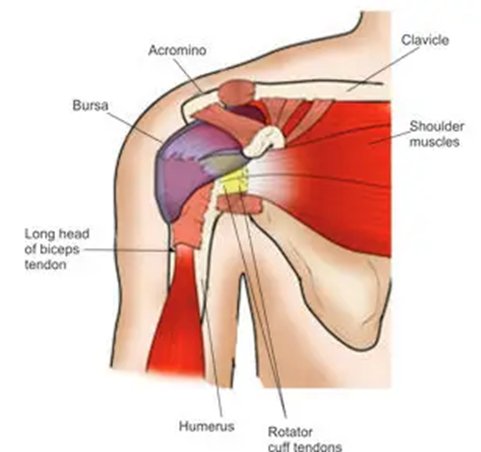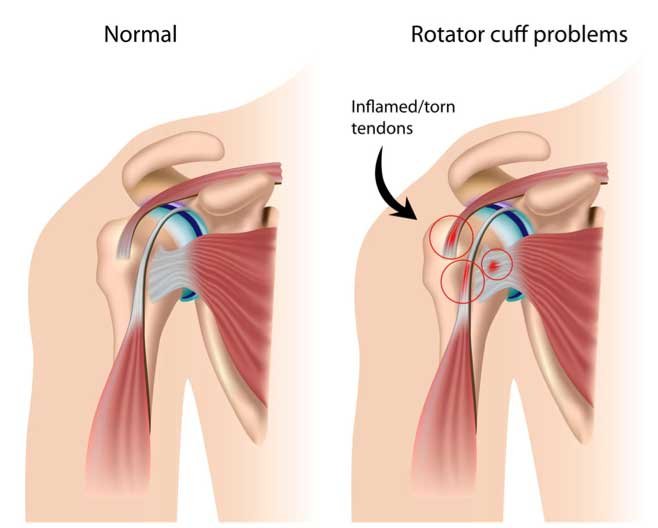Rotator Cuff Tear Surgery
Expert Insights: Dr. Kewal Gangrade, Top Orthopedic Surgeon in Bhopal, on Managing Rotator Cuff Tears and Restoring Shoulder Functionality
If you’ve ever had a rotator cuff tear, you know how much it can really affect your shoulder. It causes pain and weakness, which can make even simple tasks like getting dressed, brushing your teeth, or combing your hair feel much harder than they should be. It’s incredibly frustrating when things that once felt easy now cause discomfort or strain. But don’t worry, with the right treatment and care, you can get back to doing those everyday tasks without all the pain and struggle. With time and the right approach, you’ll be able to regain your strength and range of motion.
Understanding Your Shoulder Joint
As humans age, they frequently suffer from rotator cuff tears, which can seriously impair shoulder function. Daily activities like washing the hair, getting dressed, or reaching for items on high shelves may feel much more difficult than they need to be due to the accompanying discomfort and weakness. When something you’re use to locate easy changes into a difficulty, it can be rather annoying. Don’t worry, though; with the correct care and attention, you’ll be able to resume your favorite basic activities without experiencing that ongoing agony.



What Is Rotator Cuff Repair?
The rotator cuff is a group of muscles and tendons that connect your upper arm bone (humerus) to the shoulder blade, and it plays a critical role in stabilizing your shoulder. The four muscles that make up the rotator cuff—supraspinatus, infraspinatus, teres minor, and subscapularis—work together to keep your arm bone in place within the shoulder socket. But if one of these tendons tears, it can cause a lot of discomfort and make everyday activities harder. In these cases, rotator cuff repair surgery is often needed. So, if you’re dealing with a tear, it’s a good idea to see Dr. Kewal Gangrade. He’s a trusted orthopedic surgeon in Bhopal, and he specializes in fixing rotator cuff injuries to help you get back to doing the things you love.
Symptoms of Rotator Cuff Injuries
Rotator cuff injuries can happen to pretty much anyone, no matter how old you are. Some people might need surgery to fix it, but for others, there are different treatments that can help. These injuries usually build up over time from everyday wear and tear or just from moving in ways that put stress on your shoulder. Simple things like slouching or pushing your head forward all the time can increase the risk. And as we age, arthritis can bring on calcium deposits or bone spurs, which can irritate or pinch your rotator cuff, making things worse.
Repetitive stress is another big factor. Athletes, like tennis players, swimmers, and baseball pitchers, are at higher risk because of all the repetitive movements. But it’s not just athletes—people in jobs like carpentry or painting can also develop shoulder issues from doing the same thing over and over.
These injuries can range from just some inflammation caused by overuse to more serious tears of the tendons. Another common problem is bursitis, where the sac in your shoulder joint gets inflamed and causes pain.
Here’s what to watch for if you think you might have a rotator cuff injury:
- Weakness in your shoulder
- Not wanting to move your shoulder because it hurts
- Pain when lifting, reaching, or pulling
- Feeling like your range of motion is limited
“KNEEO Technique” For
Knee Replacements
- Short Hospital stay
- Less Blood Loss
- Less Pain
- Minimal Access (smaller cut)
- Faster Recovery
- Robotic Joint Replcement
Book Appointment Near You
Diagnosing Rotator Cuff Injuries
If you think you’ve got a rotator cuff injury, the first thing your doctor will do is ask about your medical history. They’ll want to know about your daily activities, exercise routine, and anything that could be causing the pain. After that, they’ll move on to a physical exam, where they’ll have you do some simple shoulder movements to figure out exactly where it hurts.
If they need more info, your doctor might suggest a few tests, like X-rays, an MRI, or an ultrasound. These help them get a better look at the inside of your shoulder and confirm what’s going on.
Once they have all the details, your doctor will talk with you about whether surgery is necessary. Sometimes, they might recommend an arthroscopy. This is a quick, minimally invasive procedure where a small camera is inserted into your shoulder joint to check out the tendons, ligaments, and cartilage. If surgery is the best option, they’ll guide you through it to help get you back to feeling better.
For expert consultation and treatment of rotator cuff tears, consult Dr. Kewal Gangrade, a leading orthopedic surgeon specializing in rotator cuff tear repair in Bhopal.
Rotator Cuff Repair Procedure
Either general or regional anesthesia will be administered for the procedure. With general anesthesia, you will remain unconscious throughout the surgery. On the other hand, regional anesthesia will keep you drowsy but alert. Your arm and shoulder will be numbed, ensuring that no discomfort is felt during the surgery, and the numbness will last for up to 16 hours.
Rotator cuff repair is typically performed using an arthroscope or, alternatively, through open surgery, with either a large or small incision being made.
During arthroscopic repair, a small camera is inserted through one hole, with one to three additional incisions made for instruments. The surgeon then reattaches the tendon to the bone using sutures, often securing them with small rivets called suture anchors. These rivets, made of metal or dissolvable material, don’t require removal.
For larger tears, traditional open surgery may be required, involving the creation of a larger incision. Alternatively, a mini-open approach, utilizing a smaller incision, may be employed. Both open and arthroscopic procedures may also be used to address calcium deposits or bone spurs, which are known to cause pain.
After the procedure, the incisions will be closed and dressed. If arthroscopy was performed, images of the repaired shoulder may be shown to you by your doctor.
Recovery from Rotator Cuff Repair
Following surgery, your doctor may advise wearing a sling for four to six weeks, along with a shoulder immobilizer to stabilize the shoulder. Pain medication may be prescribed to manage discomfort post-surgery, as shoulder procedures can be quite painful. Additionally, initiating physical therapy to regain muscle strength and improve range of motion is often recommended as part of the recovery process.
Recovery duration typically spans three to six months, contingent on the severity and type of shoulder injury. For expert guidance and treatment of rotator cuff tears, consult Dr. Kewal Gangrade, recognized as the top orthopedic surgeon specializing in rotator cuff tear repair.
FAQs
Rotator cuff tear surgery is a procedure performed to repair a torn rotator cuff, a common shoulder injury. It involves reattaching the torn tendon to the bone to restore stability and function to the shoulder joint.
There are different techniques for rotator cuff tear surgery, including open surgery and arthroscopic surgery. In open surgery, a larger incision is made to access the torn tendon directly. Arthroscopic surgery involves smaller incisions and the use of a tiny camera and specialized instruments inserted through these incisions to repair the tear.
Candidates for rotator cuff tear surgery typically have significant pain, weakness, and loss of function in the shoulder that do not improve with nonsurgical treatments such as rest, physical therapy, and medications.
Common risks and complications of rotator cuff tear surgery include infection, bleeding, nerve injury, stiffness, and failure of the repair.
Recovery from rotator cuff tear surgery involves wearing a sling, physical therapy, and gradually increasing activity levels. It can take several months to fully recover and regain strength and range of motion in the shoulder.
